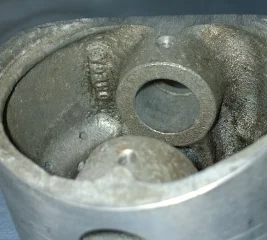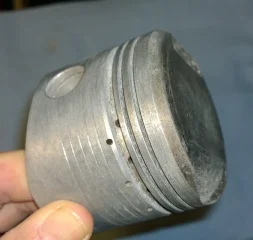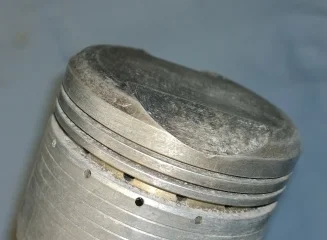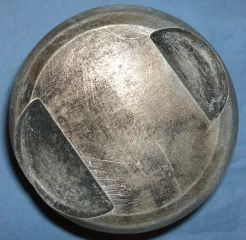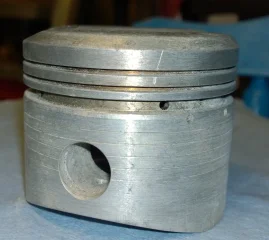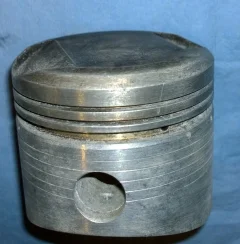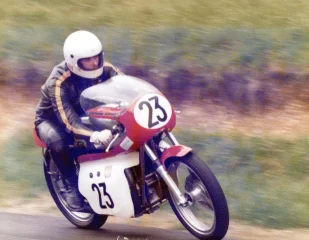Wrong, that was addressed by the factory for both the full hemi AMA heads and the short stroke heads. It was all part of the kit
That may be true, but Jim is right in pointing out that anyone doing a big valve, full hemi conversion today needs to be careful not to increase the combustion chamber volume any more than necessary. And the factory short stroke heads are a good example of why. The combustion chamber volume in a factory short stroke head is larger than in a standard 850 Commando. That means to get a high CR, they will need to use something besides a normal flat top piston. The problem gets even worse if you are using a big valve head modified for even larger valves and full hemi combustion chamber. The factory specs for combustion chamber volume are 50 cc for a standard RH4 850 head, and 53 cc for an RH7 head. Some of the RH7 heads that the factory modified for their race bikes have even larger combustion chambers. The one on the ex-factory flat track bike that I bought measured out at 57.3 cc. Even with the factory kit Omega pistons, it only had a measured CR of 9.2. I had to mill the head, re-contour the piston dome, and open up the valve pockets to get the CR up to 10.2, and that was as high as I could get it with those pistons. Even then, the exhaust valve pocket had to be cut so deep that it eventually burned through to the top ring groove. Of course, that's the extreme case, considering the modified head and that it had a lumpy cam (Sifton 460), but it is a good illustration of the point Jim was making.
You can minimize the increase in combustion chamber volume when doing the big valve conversion by keeping the squish bands, as some tuners did (Steve Maney for one), instead of opening the combustion chamber up to a full hemi.
Back in 2009 I compiled a list of combustion chamber volumes for several heads that I had worked on at different times. It may be a little off topic, and I might have posted it here in the past, but I'm including it anyway, just in case someone might find it of interest. I need to update it to include other heads I've used in the last 20 years, but haven't got around to that yet.
-------------------------------------------------------------------------------------------------------------------------------------------------------------------------
Jeff Law’s 750 head converted to 920. Milled and counterbore machined – 44.6 cc.
Steve Shivers’s 750 head converted to 920. Milled and counterbore machined – 45.8 cc.
Head from Marc Field’s Dunstall 810 engine. 850 converted to 750 bolt pattern, milled. – 42.4 cc.
850 head from Jim Schmidt’s race engine. Milled. – 42.4 cc.
Axtell 30 mm port 750 head – 51.0 cc.
Axtell 32 mm port 750 head – 48.8 cc.
Stock Mk3 850 head – 51.6 cc.
Mk3 850 head milled .060” – 43.2 cc.
Stock Mk2 850 head – 51.8 cc.
Short Stroke 750 head – 55.2 cc.
Another Short Stroke 750 head – 52 cc.
Ex-factory Flat Track Short Stroke 750 head as removed from John Hately’s bike – 57.3 cc.
Ex-factory Flat Track Short Stroke 750 head after milling – 50.7 cc.
Nominal factory spec for standard RH4 850 head is 50 cc, and for RH7 short stroke head is 53 cc.
Ken


